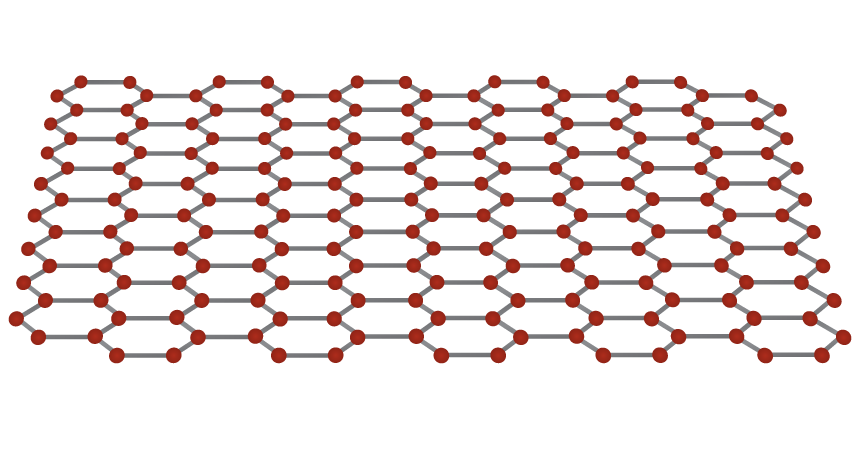‘Impermeable’ graphene yields to protons
Success in penetrating thin carbon sheets offers promise for better fuel cells

CARBON BARRICADE A graphene sheet is made up of just one atomic layer, as illustrated here, but its structure prevents other atoms and molecules from penetrating.
E. Otwell
The world’s thinnest material has a soft spot for protons.
Despite its impermeability to all atoms and molecules, the slim carbon film known as graphene allows protons to pass through it, new experiments reveal. The finding suggests that graphene and similar ultrathin materials can improve hydrogen fuel cells, which require a barrier that allows only protons to penetrate.
“It’s great work and a very important result,” says Vikas Berry, a chemical engineer at the University of Illinois at Chicago.
Discovered in 2004 by physicists Andre Geim and Konstantin Novoselov at the University of Manchester in England, graphene consists of a single layer of carbon atoms in a honeycomb pattern. Physicists quickly learned that such ultrathin materials behave very differently than their thicker cousins with the same chemical makeup. For example, graphene conducts electricity far better than its pure-carbon relative diamond.
One of graphene’s most remarkable properties is its impermeability to all gases and liquids. Despite its nanometer thickness, a single sheet of graphene presents a formidable barrier because of the dense swarm of electrons surrounding its carbon nuclei. Theorists’ calculations had suggested that it would take tens of years for a proton to pass through.
Ignoring the dire theoretical predictions, Geim and his colleagues decided to test graphene’s proton permeability. The researchers placed a sheet of graphene between electrodes made of Nafion, a polymer that conducts protons but not electrons, and measured whether a current of positive charge flowed between the electrodes. Surprisingly, the team detected a steady current, proving that protons were migrating through the graphene. The current ceased when the researchers added a second sheet of graphene, suggesting that the additional layer sealed up proton-sized pores in the first sheet. The results were posted online October 31 at arXiv.org.
“It’s actually an astounding paper,” says Michael Strano, a chemical engineer at MIT. He says it’s the first experimental evidence he has seen that anything larger than an electron can pass through a graphene sheet, with the exception of particles moving at a significant fraction of the speed of light.
Geim’s team also tried out other ultrathin materials as barriers between the Nafion electrodes. Berry is particularly excited by the high proton permeability of hexagonal boron nitride, which is a tad thicker than graphene. He envisions nanometer-thick sheets of boron nitride as components of hydrogen fuel cells, which convert hydrogen fuel into electricity and harmless waste products such as water. These fuel cells require a membrane made of a material that allows protons to pass through but nothing else. While graphene may fit the bill, Berry notes that its high conductivity of electrons could be an impediment. But boron nitride is an electrical insulator, ensuring that only protons migrate through the barrier.







